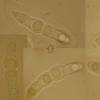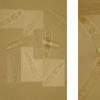
20-12-2025 23:08
Patrice TANCHAUDBonsoir, récolte sur sol sablonneux dans l'arri�

20-12-2025 15:47
Mirek GrycHi.These grew on pine wood that was heavily covere

18-12-2025 21:17
Pol DebaenstThe identification took me to Byssonectria deformi

15-12-2025 07:09
 Danny Newman
Danny Newman
indet. Rutstroemiaceae sp. on unk. fallen leavesMc

19-12-2025 10:10
Patrice TANCHAUDBonjour, récolte réalisée en milieu dunaire, a

18-12-2025 17:23
 Bruno Coué
Bruno Coué
Bonjour,je serais heureux d'avoir votre avis sur c

18-12-2025 18:07
Margot en Geert VullingsThese plumes were found on rotten wood.They strong

17-12-2025 18:35
 Michel Hairaud
Michel Hairaud
Bonjour à tous/Hi to everyone I am passing along
I have found a pyrenomycete on Phalaris/Phragmites (?) on a riverbank in the South of England that I cannot identify. It grows on the same stem as Massarina arundinacea.
Ascospores (37.1 - 41 x 7.7 - 8.7µm) have a distinct but fugacious mucilaginous sheath. They are hyaline and (almost?) always 1-septate when discharged, but become light brown, roughened and 3-5 septate when senescent.
Asci have no visible aparatus.
Ostioles appear not to be laterally compressed.
I have a feeling it may be another species around Massarina, but I have no access to 'A World Revision of Massarina' Aptroot. I wonder if someone out there could help me (either with the identification or with the article...)
Merci pour votre aide,
Nick
Apparemment il s'agit en effet de: Massarina arundinacea (Sow.: Fr.) Leuchtman, Sydowia,
37: 179, 1984 (1985)
Spécimen fréquent sur Phragmite et probablement aussi sur Phalaris.
Cordialement
Paul
Salut à tous,
Cheers Chris - I'm not sure it's helped me much, though :) - These Massarina are tough...
Thanks for your help, Paul - These ascospores seem strange for M.arundinacea. They are larger than I have come to expect, have different guttules and are slightly differently shaped.
Can the two types of spores below plausibly come from the same species or do they both represent extremes of M.arundinacea? They are from two diffferent perithecia on the same stem (the photos are to the same scale).
Cordialement,
Nick

I think this is not M. arundinacea (Lentithecium arundinaceum). I had this species 2 weeks ago in Austria.
regards,
björn
Yes, after further study it's clear to me this is not M.arundinacea.
There are clearly no exact matches in 'A World Revision of Massarina' Aptroot.
I suppose I could dry the specimen in order to compare spore size and shapes with Aptroot's illustrations (as they were drawn from herbarium material). I don't have much hope though....
Cordialement,
Nick
I agree, it's not M. arundinacea ( even if there is some similar features).
Tanaka & Harada have decribed, in Pleosporales in Japan vol. 3, species found on similar substrates with almost similar ascospores but these last ones are generally smaller.
the closest one is perhaps Massarina peerallyi (given by T&H with ascopores measuring 31-43 x 7-10,5 µm ; perhaps different from the peerallyi of Hyde & Aptroot, I think). It could be a new species.
It's surely a question for a specialist.
Alain
Thanks for pointing me towards Tanaka & Harada - An interesting article - My fungus does seem very close indeed to several of those species!
Tomorrow I will send the specimen to René Schumacher for culture/sequencing, so I haven't yet given up hope...
Cordialement,
Nick






 1998-v66-p89-0001.pdf
1998-v66-p89-0001.pdf